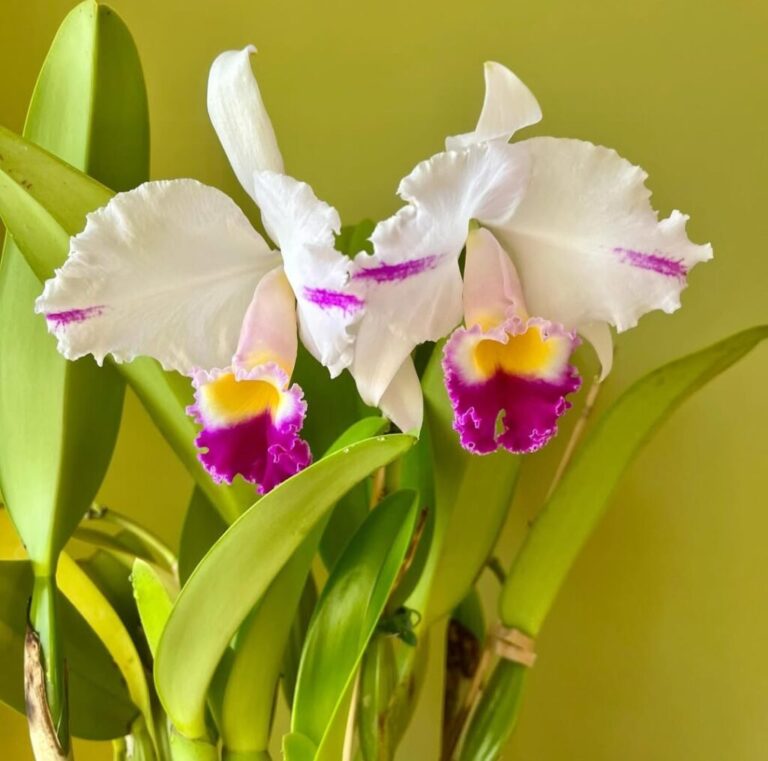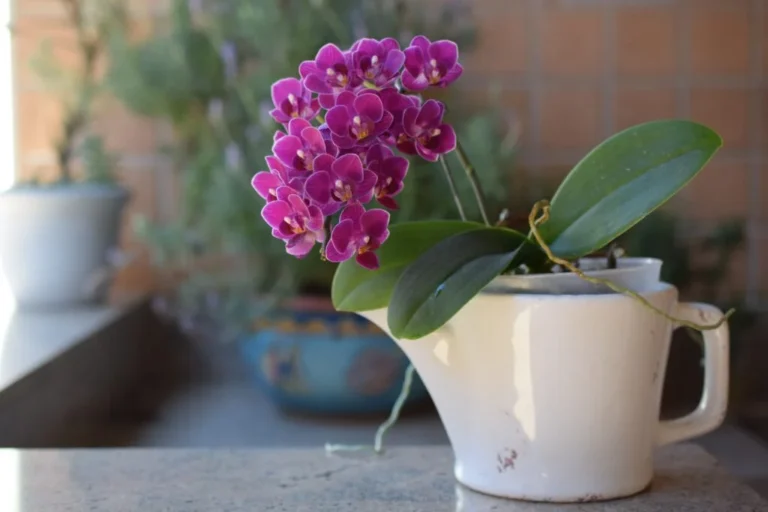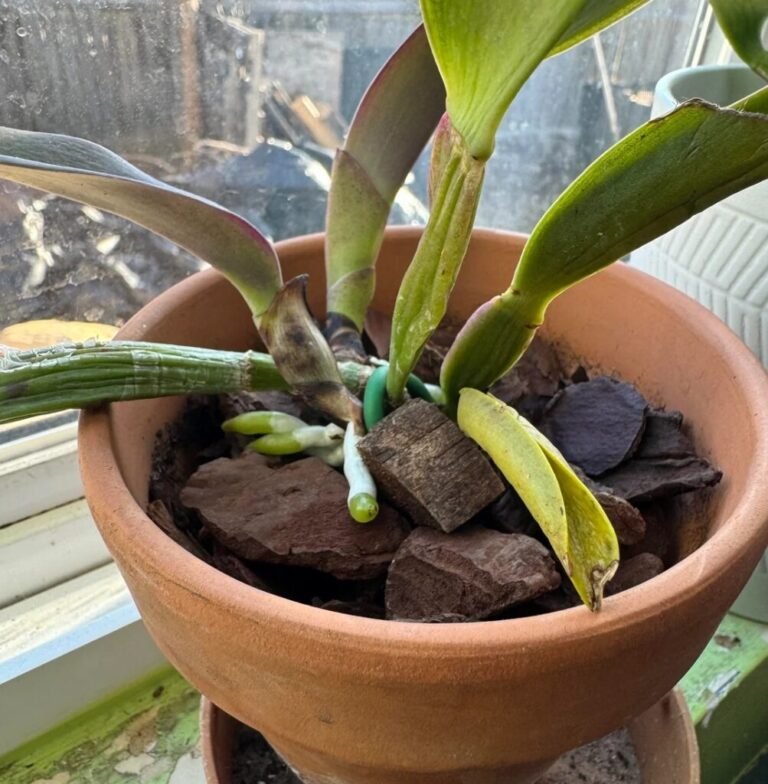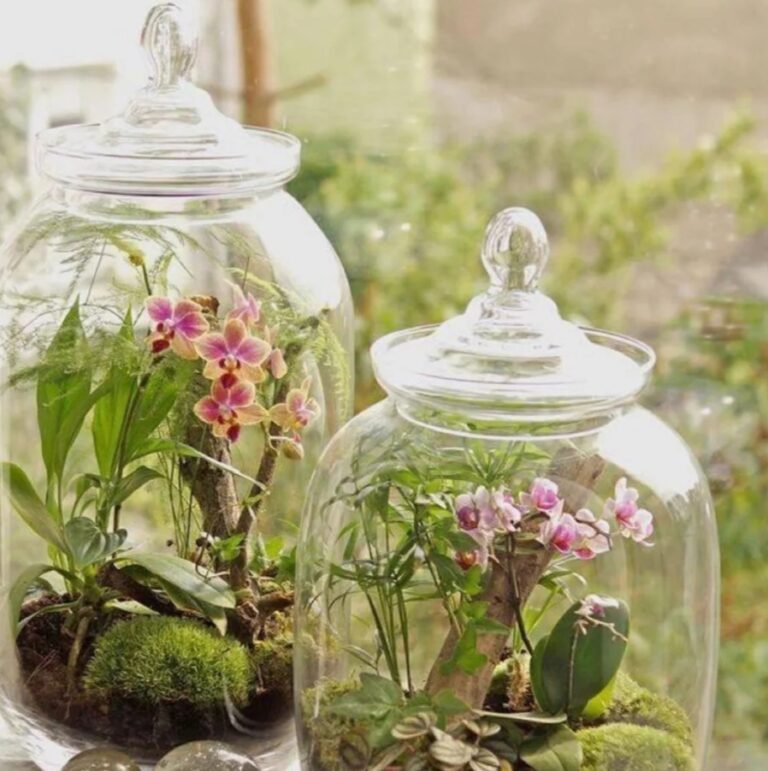- 1 Orchid Winter Care 10 Must-Know Tips
- 2 Understanding Winter Challenges for Orchids
- 3 Ideal Indoor Locations for Winter Orchid Care
- 4 Temperature Requirements During Cold Months
- 5 Light Requirements and Window Placement
- 6 Humidity Management in Winter Conditions
- 7 Watering Adjustments for Orchid Care in Winter
- 8 Common Winter Care Mistakes to Avoid
- 9 Special Considerations for Different Orchid Species
- 10 Signs of Winter Stress and Solutions
- 11 Conclusion: Thriving Orchids Through the Winter Season
- 12 FAQ
Orchid winter care can be tricky, with the cold temperatures, less light, and dry indoor air creating challenges for your beloved plants. However, with the right knowledge and a few simple adjustments, you can ensure your orchids stay healthy and vibrant throughout the season. In this guide, we’ll cover 10 must-know tips to help protect your orchids from winter stress. From managing temperature and humidity to adjusting watering routines, these tips will keep your orchids thriving all winter long, so they’re ready to bloom when spring comes. Let’s explore the essential steps to ensure your orchids stay strong and beautiful!
Orchid Winter Care 10 Must-Know Tips

Good winter care means watching the temperature and humidity closely. By following the right steps and avoiding mistakes, your orchids will stay healthy. It’s about creating a cozy spot that fits their needs, especially for warmth and light.
Key Takeaways
- Winter orchid care requires attention to temperature, light, and humidity levels
- Orchid temperature requirements are crucial for healthy growth and blooming
- Proper care can help prevent common winter-related problems
- Understanding the specific needs of your orchid species is essential
- Creating a balanced environment is key to thriving orchids in winter
- Orchid care in winter involves making adjustments to watering and misting routines
Understanding Winter Challenges for Orchids
As winter comes, orchid lovers face special challenges. Temperature changes can slow down orchid growth. This is because winter temperatures drop, affecting humidity levels.
Less light in winter is another big issue. Orchids need light to bloom well. Grow lights can help fill this light gap.
Temperature Fluctuations
Temperature changes hurt orchids, especially in winter. Keep them in a spot with steady temperatures between 65-75°F (18-24°C). This helps them stay healthy.
Reduced Light Exposure
Less light is another winter challenge. Use natural and artificial light to help. Place orchids near sunny windows or use grow lights.
Humidity Changes
Changes in humidity also affect orchids in winter. Use humidifiers or trays to keep the air moist. This maintains the happiness and health of your orchids.
Ideal Indoor Locations for Winter Orchid Care
Choosing the right spot for your orchids is key to winter orchid care tips. Look for a place with the right light, warmth, and humidity. Avoid spots near windows, heaters, and drafts.
Greenhouses or sunrooms are great for orchid care. They offer the perfect mix of light and warmth.
Here are some tips for indoor orchid locations:
- Avoid direct sunlight to prevent overheating and dryness
- Keep orchids away from heating vents to avoid dry air
- Place them near a window with a sheer curtain for filtered light and humidity
- Use a humidifier or humidity tray to keep the air moist
By following these winter orchid care tips and picking the right indoor orchid locations, your orchids will thrive. Keep an eye on temperature, light, and humidity in your home. Adjust your orchids’ location as needed.
With proper care, your orchids can bloom even in winter. Provide the right light, warmth, and humidity. This will keep them healthy and happy until spring.
| Location | Light | Temperature | Humidity |
|---|---|---|---|
| Near a window | Bright, indirect | 65-75°F (18-24°C) | 40-60% |
| Away from heating vents | Low to moderate | 55-65°F (13-18°C) | 50-70% |
| In a greenhouse or sunroom | Bright, direct | 70-80°F (21-27°C) | 60-80% |
Temperature Requirements During Cold Months
Orchids are very sensitive to temperature changes. Knowing their orchid temperature requirements is key to keeping them alive during the cold months. Keeping the temperature steady and avoiding cold drafts is crucial for their health.
It’s important to keep orchids away from cold drafts. Place them in spots that are not near windows, doors, or air conditioning vents. This helps keep the temperature stable and prevents cold air from reaching them.
Daytime Temperature Ranges
Most orchids do best in temperatures between 65-75°F (18-24°C) during the day. This range is perfect for growth and blooming. But, some orchids might need different temperatures, so it’s good to check what your orchid needs.
Nighttime Temperature Drops
At night, the temperature can safely drop by 5-10°F (3-6°C). This drop can actually help your orchids bloom and grow roots better. By keeping the temperature steady and avoiding cold drafts, you create the best environment for your orchids.
Avoiding Cold Drafts
To stop cold drafts from harming your orchids, you can try a few things. You can put a curtain or screen between the orchid and the cold air. Or, you can use a humidifier or heating mat to keep the temperature and humidity just right.
Light Requirements and Window Placement
When it comes to lighting for orchids, they have specific needs. Shorter daylight in winter can be a challenge. Place them near an east- or west-facing window for gentle, indirect light.
Some key considerations for lighting for orchids include:
- Duration: Most orchids need 12-14 hours of light daily.
- Intensity: The light should be bright but not direct, to avoid burning.
- Supplementation: If natural light is not enough, use grow lights to help.
Understanding lighting for orchids and window placement for orchids helps your plants thrive. Keep an eye on how your orchids react to the light. Adjust as needed to ensure they get the right amount.
Humidity Management in Winter Conditions
Orchids love humid places, best between 40-70%. Winter air is drier, so we need to keep humidity right. Using humidity trays is a good way. You put the pot on a tray with water and pebbles. As the water evaporates, it makes the air around the orchid more humid.
Misting orchids is another method. Use a spray bottle with distilled water. Mist them gently but well, without soaking them. For better results, think about getting a humidifier. There are many types, from small to big ones.
When picking a humidifier, look for adjustable settings and automatic shut-off. Also, a built-in hygrometer is helpful. Brands like Honeywell, Dyson, and Levoit are popular. Using these methods will help keep your orchids healthy and happy during winter.
Humidity Management Tips
- Place the orchid pot on a tray filled with water and pebbles to increase humidity for orchids
- Mist the orchids gently but thoroughly using a spray bottle filled with distilled water
- Consider using a humidifier, such as those from Honeywell, Dyson, or Levoit, to maintain optimal humidity levels
By following these tips and using the right tools, you can make a humid space for your orchids. Even in dry winter, they can stay healthy. Keeping humidity right is key for your orchids’ health. With the right methods and tools, your plants will stay happy and healthy.
Watering Adjustments for Orchid Care in Winter
When it comes to watering orchids in winter, you need to change your watering schedule. Orchids grow slower in winter and need less water. Overwatering can harm them, so water less often and let the soil dry a bit.
The water temperature for orchids is very important. Orchids like water that’s not too cold or too hot. The best temperature is between 65-75°F (18-24°C).

- Water your orchids in the morning, letting them dry a bit before night.
- Use a potting mix that drains well to avoid waterlogged soil.
- Keep an eye on your home’s humidity, as high levels can cause too much water.
By following these tips and adjusting your watering, your orchids will do well in winter. Always check the soil moisture before watering. And make sure not to get water on the crown or leaves to prevent rot.
| Watering Frequency | Water Temperature |
|---|---|
| Reduce frequency in winter | Lukewarm water (65-75°F/18-24°C) |
Common Winter Care Mistakes to Avoid
Many people make common orchid care mistakes in winter. One big mistake is overwatering, which can cause root rot. It’s important to water less in winter because of lower humidity and light.
Another winter orchid care mistake is not enough humidity. This can dry out and stress orchids. To fix this, use humidity trays or mist them often. Also, wrong temperatures can harm orchids. Knowing these mistakes helps keep orchids healthy.
Here are a few typical errors to look out for:
- Overwatering can cause root rot and other issues.
- Insufficient humidity, which can cause dehydration and stress
- Incorrect temperature management, which can affect orchid growth and blooming
By avoiding these common orchid care mistakes and taking the right steps, orchid lovers can help their plants thrive in winter. With the right care, orchids can bloom and grow, even in cold months.
Special Considerations for Different Orchid Species
Winter care for orchids varies by species. Knowing what each needs is key to their health. For instance, phalaenopsis care means keeping a steady temperature and humidity. On the other hand, dendrobium requirements include enough light and water.
Here are some important points for popular orchids:
- Phalaenopsis: needs moderate to bright light and consistent watering
- Dendrobium: requires bright light and careful watering to prevent root rot
- Cattleya: needs bright light and moderate watering, with a focus on cattleya adaptations to prevent root damage
Understanding your orchid’s needs is crucial for winter care. Whether it’s phalaenopsis care, dendrobium requirements, or cattleya adaptations, pay close attention. Adjust your care based on their unique needs.

| Orchid Species | Light Requirements | Watering Needs |
|---|---|---|
| Phalaenopsis | Moderate to bright | Consistent |
| Dendrobium | Bright | Careful |
| Cattleya | Bright | Moderate |
Signs of Winter Stress and Solutions
Orchids can show signs of winter stress due to temperature, humidity, and light changes. It’s important to spot these signs to help your orchid. Common signs include leaf drop, root rot, and not blooming.
Understanding the causes of these signs is key. Signs of winter stress in orchids might be hard to notice but can harm your plant. By recognizing them, you can take steps to help your orchid get better.
To fix orchid stress, you can adjust watering, add humidity, and ensure enough light. Here are some tips for winter stress in orchids:
- Check the roots for rot and repot the orchid if necessary
- Adjust the watering schedule to prevent overwatering
- Provide more humidity using a humidifier or humidity tray
- Ensure adequate light exposure, but avoid direct sunlight
By following these tips, you can help your orchid do well in winter. Keep an eye on your orchid and adjust its care to prevent more stress.
With the right care, your orchid can bounce back from winter stress. By addressing orchid stress, you can help your plant bloom beautifully for years.
| Signs of Winter Stress | Solutions |
|---|---|
| Leaf drop | Adjust watering schedule, provide more humidity |
| Root rot | Repot the orchid, improve drainage |
| Failure to bloom | Ensure adequate light exposure, provide necessary nutrients |
Conclusion: Thriving Orchids Through the Winter Season
Winter can be tough on orchids, but they can still thrive with the right care. Knowing how to handle the cold and dark months is key. This guide has shown you how to keep your orchids healthy and beautiful.
Adjusting temperature, light, and humidity is crucial. So is changing how often you water them. By following these tips, you can make sure your orchids do well during winter. This will help them bloom even more when spring comes.
With a little patience and the right knowledge, your orchids can bring joy all winter long. Take on the challenge and enjoy their beauty. Your orchids will thank you.
FAQ
What are the most important factors to consider when caring for orchids in the winter?
When caring for orchids in winter, focus on temperature, light, and humidity. Keeping these conditions right is key to your orchids’ health and growth.
How can I ensure my orchids get the right temperature during the winter?
Keep your orchids in a temperature range of 65-85°F during the day. At night, let the temperature drop by 10-15°F. Steer clear of cold drafts and abrupt temperature changes to avoid stress.
How much light do orchids need in the winter, and how can I provide it?
Orchids need plenty of light in winter. Place them near a south- or east-facing window for 12 hours of bright, indirect light.If there is a lack of natural light, use grow lights.
What can I do to maintain the proper humidity level for my orchids in the winter?
Orchids prefer 50-70% humidity. Use humidity trays, mist plants, or a humidifier to increase humidity. But, don’t overdo it to avoid problems.
How should I adjust my watering routine for orchids in the winter?
Orchids require less water in the winter since their growth is slower. When the top inch of the potting mix is completely dry, water it. Avoid startling the roots by using lukewarm water.
What are some common mistakes to avoid when caring for orchids in the winter?
Avoid overwatering, cold drafts, not enough light, and poor humidity. Knowing these mistakes can help keep your orchids healthy all winter.
Are there any special considerations for different orchid species in the winter?
Yes, each orchid species has its own winter care needs. For example, Phalaenopsis need more humidity, Dendrobiums prefer cooler nights, and Cattleyas are more adaptable. Knowing your orchid’s specific needs is crucial.
How can I identify and address signs of winter stress in my orchids?
Look for leaf problems, root issues, and blooming concerns as signs of winter stress. Fix these by adjusting temperature, light, humidity, or watering to help your orchids recover.
.






